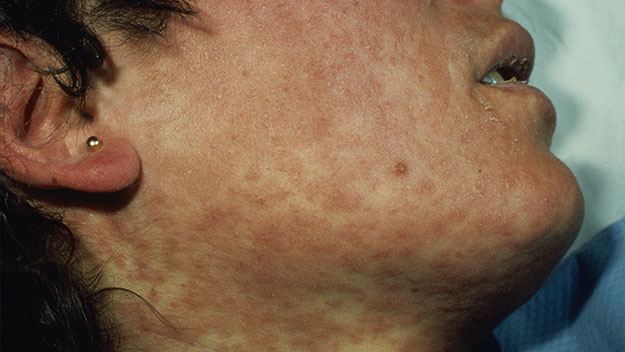What is measles?
1. The measles virus is described by the World Health Organisations as a “highly contagious, serious disease”.
2. The virus is airborne, spreading through the air with coughing and sneezing.
3. Symptoms include fever, tiredness, runny nose, sore eyes and a cough, followed by a blotchy red rash which appears two to seven days later. If you have contracted measles, symptoms usually appear 7 – 18 days after being exposed it.
4. People with measles are infectious from five days before they develop a rash until four days after.
5. About a third of people who contract measles will have complications including diarrhoea and pneumonia and sometimes require hospitilisation.
What to do?
1. If you have symptoms of measles, you should advise the medical clinic before you arrive. This is so that they can make arrangements to stop the spread of the infection.
2. If you have measles, you should stay at home and not go out in public until you are no longer infectious, that is, until four days after the rash starts.
.jpg)
Stock Image.
Are you vaccinated correctly?
1. Two doses of the Measles Mumps Rubella vaccine (MMR) are recommended and are normally given to children at 12 months and 18 months of age.
2. People born born since 1966 who have not been vaccinated correctly (that is, there is no documented evidence of receiving two doses of the MMR vaccine) and who have never had measles, are considered highly susceptible. It is recommended that people be vaccinated.
3. It is safe to have the vaccine more than twice, so people who are unsure should be vaccinated.
The outbreak
1. Australia was declared measles-free in a 2009 article in the Bulletin of the World Health Organisation.
2. Infections however have been appearing all over Australia, with cases reported in Victoria, which has hit a 15-year high with 57 cases reported since the start of the year, Tasmania, which has seen its first cases of measles in five years, as well as NSW, Cairns, Perth and Canberra.
3. It is believed that the outbreak is due to under-vaccinated people travelling from south-east Asia and the Philippines.




